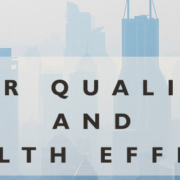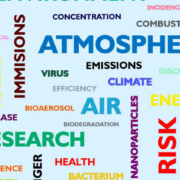Bioaerosol
Bioaerosols are airborne particles that originate from biological sources including animals, plants, pollens, fungi, bacteria, protozoa and viruses and fragments or single molecules (allergens, endotoxin, mycotoxins…) derived from each of these sources.
Bioaerosol monitoring and analysis is a rapidly emerging area of concern due to the relevant role bioaerosol may have on human health, atmospheric and ecological impacts. Bioaerosol is a multidisciplinary research topic, involving many different fields such as allergobiology, microbiology, mechanical engineering, atmospheric chemistry, climate change, medical science, epidemiology, immunological science, biochemistry, physics, industry, nanotechnologies. Most recently, researchers from different fields start to bridge together for solving bioaerosol challenges and addressing key scientific problems, e.g. bioaerosol sampling and analysis, bioaerosol spread, bioaerosol transformation and atmospheric reactivity, bioaerosol exposure in indoor and working environments…
Bioaerosols are ubiquitous in the air and can be isolated from indoor, outdoor and occupational environments using a variety of methods. In general, bioaerosol sampling is the first step toward characterizing bioaerosol concentrations and its further analysis. There are still open challenges for bioaerosol sampling (i.e. loss of viability and identification property during the collection process, sampling efficiency…) and the sampling has to be adjusted accordingly for suitability for the analysis/characterization and for different purposes of the studies. Moreover, some interesting new solutions for real-time monitor of bioaerosol start to be demonstrated although now it is rather difficult if it is not impossible to achieve real-time monitor of airborne biological agents to the species level.


We are interested to tackle emerging and unresolved problems in the field of bioaerosol research by proposing, designing and implementing innovative technical solutions, improved systems and new applications for:
- bioaerosol sampling and analysis instruments
- bioaerosol source emission characterization and monitoring
- bioaerosol concentration levels in indoor and outdoor environments
- bioaerosol health effects and personal exposure assessment






